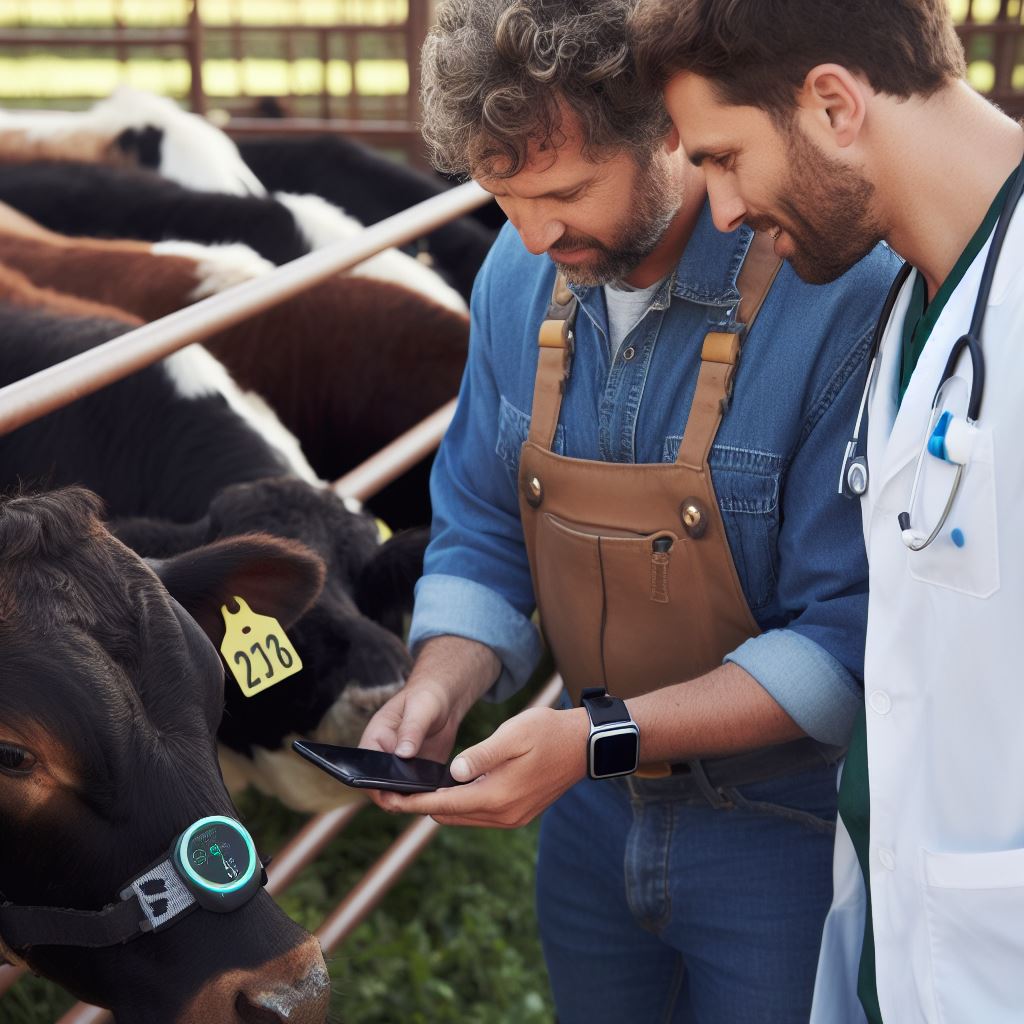Smart Fencing Solutions for Livestock Safety
Last Updated on March 2, 2024
Introduction
A. Importance of livestock safety
Livestock safety is of utmost importance for farmers and ranchers, as it directly affects their livelihoods.
The well-being and security of animals play a critical role in their productivity and health.
B. Advantages of Using Smart Fencing Solutions
- Enhanced Security: Smart fencing solutions offer advanced features like alarms and real-time monitoring, ensuring livestock safety by preventing unauthorized access or theft.
- Easy Installation: These innovative solutions are designed for easy installation, saving both time and effort for farmers.
- Remote Monitoring: Smart fencing allows farmers to monitor their livestock from anywhere, enabling them to quickly respond in case of emergencies or unusual activity.
- Reduced Costs: Traditional fencing methods require frequent maintenance and repairs, which can be costly. Smart fencing solutions are durable and low-maintenance, resulting in long-term cost savings.
- Increased Efficiency: The use of smart fencing streamlines farm management by automating tasks such as feeding, watering, and gathering data on animal behavior, leading to improved efficiency.
- Early Detection of Health Issues: Smart fences can detect abnormal behavior or signs of distress in animals, enabling timely intervention and reducing the risk of disease spread.
- Customizable Settings: Farmers can customize smart fencing solutions based on their specific needs, allowing for flexibility in managing different livestock species or sizes.
- Integration with Technology: Smart fencing systems can be integrated with other technologies like GPS tracking and mobile applications, providing farmers with comprehensive data and control.
- Environmentally Friendly: Some smart fencing solutions are eco-friendly, utilizing solar power and minimizing their carbon footprint.
Embracing smart fencing solutions is crucial for ensuring livestock safety, as they offer numerous advantages like enhanced security, remote monitoring, cost savings, and improved efficiency.
By harnessing these advanced technologies, farmers can secure their livelihoods and create a safer environment for their animals.
Traditional Fencing Challenges
A. Limited Effectiveness
Traditional fences, often wooden or barbed wire, face limitations in deterring persistent predators.
Livestock can easily breach these barriers, leading to compromised safety and potential economic losses.
Terrain variations pose additional challenges, with uneven landscapes rendering conventional fences less effective.
Inadequate deterrence can result in increased stress levels among animals, affecting their overall well-being and productivity.
B. Difficulty in Maintenance and Repairs
Wooden fences deteriorate over time, succumbing to weather conditions and demanding frequent maintenance efforts.
Barbed wire fences, susceptible to rust, require vigilant upkeep to prevent injury risks to both livestock and handlers.
The time and resources invested in constant repairs divert attention from essential aspects of livestock management.
In remote areas, accessing and repairing damaged fences becomes a logistical challenge, exacerbating the maintenance burden.
C. Lack of Real-Time Monitoring and Alerts
Conventional fences lack the technological edge necessary for real-time monitoring, leaving livestock vulnerable to unforeseen threats.
Unauthorized access often goes unnoticed until significant damage occurs, jeopardizing the safety of the entire herd.
Smart fencing solutions, integrating sensors and cameras, provide instant alerts, enabling swift responses to potential breaches.
Real-time monitoring not only enhances security but also minimizes the risk of livestock injuries and ensures timely medical attention.
In summary, traditional fencing methods fall short in addressing the dynamic challenges of livestock safety.
Limited effectiveness, coupled with maintenance difficulties and the absence of real-time monitoring, necessitate a paradigm shift.
Embracing smart fencing solutions can revolutionize livestock management, offering a proactive approach to safeguarding animals and mitigating risks.
Read: Effective Dairy Farming: Yield Maximizing Tips
Explaining Smart Fencing Solutions
A. Definition and purpose
A smart fence system is a technologically advanced and automated enclosure designed to enhance livestock safety and security.
Its purpose is to monitor and control the movement of livestock within a designated area.
B. Components of a smart fence system
- Sensors: These devices play a crucial role in detecting and monitoring livestock movements.
- Communication devices: Smart fences employ various technologies like GPS, RFID, and Wi-Fi to transmit data between different components.
- Control panel or software: It acts as the central hub for managing the entire smart fence system and making informed decisions.
C. Benefits of smart fencing solutions for livestock safety
- Enhanced livestock management: Smart fences enable farmers to monitor the location and behavior of their livestock in real-time, ensuring their safety and well-being.
- Improved security: The integration of sensors and communication devices in a smart fence system helps prevent unauthorized access and deters potential threats like theft or predator attacks.
- Efficient resource management: Smart fences assist in optimizing the utilization of resources such as grazing areas and water sources by controlling the movement of livestock.
- Early detection of health issues: With the ability to continuously collect and analyze data, smart fences can identify abnormal behavior patterns in livestock, allowing early detection and prompt medical intervention.
- Minimized labor and costs: By automating the monitoring and control processes, smart fences reduce the need for manual labor, resulting in cost savings for farmers.
- Real-time alerts and notifications: Smart fence systems can send instant alerts to farmers through mobile apps or email, informing them about any breaches, irregularities, or emergencies, ensuring prompt actions.
- Increased productivity: With the ability to maximize security and manage resources efficiently, smart fences contribute to higher livestock productivity and profitability for farmers.
- Scalability and versatility: Smart fence solutions are flexible and adaptable, catering to various types of livestock and geographical locations.
In fact, smart fencing solutions offer a range of advanced features and benefits that significantly enhance livestock safety.
With their ability to monitor and control livestock movements, detect health issues at an early stage, and provide real-time alerts, smart fences empower farmers with a more efficient and secure approach to managing their livestock.
The adoption of smart fencing technology not only ensures the well-being of livestock but also enables farmers to optimize resource usage, reduce labor costs, and increase overall productivity.
Read: Horse Care Essentials: A Comprehensive Guide
Types of Smart Fencing Solutions
A. Electric fences
- Electric fences work by sending an electric current through a wire, creating a mild shock upon contact.
- Benefits of electric fences for livestock safety include affordable installation, low maintenance, and effectiveness in keeping livestock within boundaries.
- When installing electric fences, consider the power source, proper grounding, and regular maintenance to ensure functionality.
B. GPS-enabled virtual fences
- GPS-enabled virtual fences use global positioning systems to create virtual boundaries for livestock.
- Advantages of GPS-enabled virtual fences for livestock safety include flexibility, adaptability, and ease of installation.
- Limitations and considerations include the reliance on technology, potential signal interference, and the need for proper training and monitoring.
C. RFID-based fencing systems
- RFID (Radio Frequency Identification) technology utilizes electromagnetic fields to automatically identify and track livestock.
- RFID plays a crucial role in livestock management by providing real-time data on animal location and behavior.
- Benefits of RFID-based fencing systems include improved traceability, enhanced security, and efficient livestock monitoring.
Smart fencing enhances livestock safety and management through:
- Electric fences, providing an affordable and effective deterrent for livestock.
- GPS-enabled virtual fences, offering flexibility and adaptability for rotational grazing.
- RFID-based systems, improving traceability, security, and efficient livestock monitoring.
Considerations for electric fences include proper grounding, maintenance, and vegetation management.
GPS-enabled virtual fences require monitoring, training, and consideration of technology vulnerabilities.
RFID-based systems enhance traceability, security, and monitoring of livestock behavior, health, and reproduction.
In short, adopting smart fencing solutions improves livestock management, ensuring safety and well-being while addressing specific operational needs.
Read: Poultry Management: Key Practices Revealed

Case Studies and Success Stories
A. Real-life examples of smart fencing implementations
- In Australia, the Outback Smart Fence has dramatically reduced livestock losses to predators.
- The use of GPS-enabled smart collars on cattle in the United States has improved tracking and management.
- A dairy farm in New Zealand installed smart fencing that notifies farmers of any breaches, resulting in faster response times.
- A ranch in Texas implemented smart fencing with motion sensors, reducing instances of cattle theft.
B. Impact on livestock safety and management
- Smart fencing solutions have significantly improved the overall safety of livestock by deterring predators and thieves.
- Real-time alerts provided by smart fences enable quicker response to breaches, minimizing potential damages.
- The ability to track and monitor livestock movements allows for more effective management and planning.
- Livestock owners can make informed decisions based on data provided by smart fence systems, enhancing overall safety.
C. Lessons learned from successful cases
- A crucial lesson learned is the importance of selecting the right technology that suits specific livestock needs.
- Integrating smart fencing into existing management systems requires proper training and understanding of the technology.
- Regular maintenance and monitoring of smart fences are essential to ensure their continued effectiveness.
- Collaborating with experts and sharing experiences with other livestock owners can help improve the implementation of smart fencing solutions.
Overall, these case studies illustrate the efficacy of smart fencing, reducing losses, improving management, and offering lessons for successful adoption.
Continuous development ensures the future of livestock security.
Read: Boosting Goat Health: Nutrition & Care Tips
Delve into the Subject: Climate-Smart Cattle Farming
Challenges and Considerations
Achieving livestock safety through smart fencing solutions is not without its challenges and considerations.
These factors must be carefully evaluated before implementing such technologies:
A. Initial investment and costs
Implementing smart fencing solutions requires a significant initial investment, which includes purchasing the necessary equipment and installation costs.
It may pose a financial burden, especially for small-scale farmers.
B. Maintenance and technical support
Smart fencing systems require regular maintenance and technical support to ensure their proper functionality.
Farmers need to be prepared to dedicate time and resources for system upkeep and troubleshooting.
C. Compatibility with existing infrastructure
Integrating smart fencing systems with existing infrastructure can be a challenge.
Farmers must evaluate the compatibility of the technology with their current equipment and make any necessary adjustments or upgrades.
D. Training and skill requirements for managing smart fences
Operating smart fencing systems often requires specialized knowledge and skills.
Farmers must be willing to invest in training to understand the technology and effectively manage the smart fences.
Despite these challenges, the benefits offered by smart fencing solutions outweigh the difficulties they present.
By addressing these considerations, farmers can maximize the advantages of livestock safety through smart fences.
Read: Pig Farming 101: Basics for Beginner
Conclusion
A. Recap of the benefits of smart fencing solutions
Smart fencing solutions offer a range of benefits for livestock safety.
They provide real-time monitoring and alert systems, enabling farmers to quickly respond to any potential threats.
This helps minimize the risk of predators attacking the livestock, ultimately ensuring their safety and well-being.
B. Encouraging adoption for improved livestock safety
The adoption of smart fencing solutions should be encouraged among farmers to enhance livestock safety.
Government subsidies, education programs, and awareness campaigns can play a significant role in promoting the adoption of these advanced technologies.
By investing in smart fencing, farmers can protect their livestock more effectively and reduce the loss of animals due to predation.
C. Future developments and potential advancements in smart fencing technology
The future of smart fencing technology looks promising.
Continuous advancements in sensor technology, artificial intelligence, and data analytics will provide farmers with even more sophisticated tools for livestock safety.
These developments may include enhanced fence detection capabilities, predictive algorithms, and integrated drone surveillance systems.
Such advancements will further improve the overall effectiveness and reliability of smart fencing solutions.


